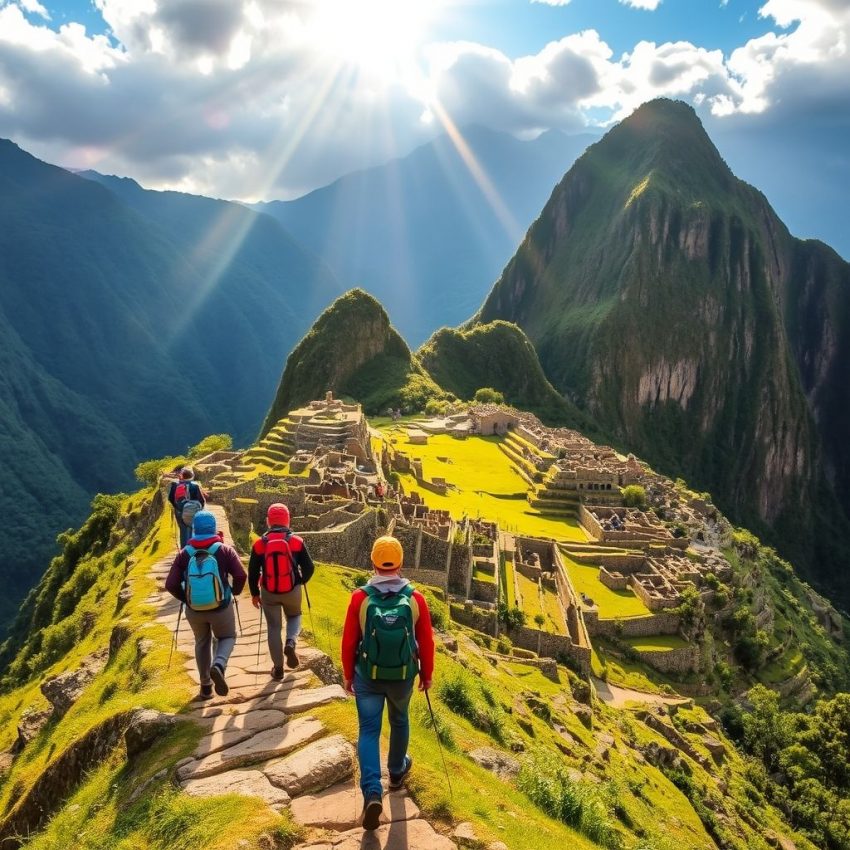Conquering the Inca Trail: Just How Hard Is It, Really?
The Inca Trail to Machu Picchu is a bucket-list adventure for many, conjuring images of breathtaking Andean scenery and ancient ruins. But it's also a trek, and not a stroll in the park. So, just how hard is the Classic Inca Trail? Let's unpack the challenge and answer some frequently asked questions.
Difficulty Level: Moderate to Challenging
The Inca Trail is generally considered a moderate to challenging trek. While it doesn't require technical mountaineering skills, it involves hiking at high altitude, traversing uneven terrain, and tackling steep ascents and descents. Factors influencing difficulty include:
- Altitude: The trail reaches a maximum altitude of 4,200m (13,780ft) at Dead Woman's Pass. Altitude sickness can affect anyone, regardless of fitness level.
- Distance: The Classic Inca Trail covers approximately 43km (26 miles) over four days.
- Terrain: Expect a mix of rocky paths, Inca stairs, and uneven ground. Some sections can be slippery, especially during the rainy season.
- Weather: Conditions can change rapidly, from scorching sun to freezing rain. Be prepared for all types of weather.
FAQs for Inca Trail Trekkers:
1. How fit do I need to be?
A good base level of fitness is crucial. Regular hiking, cardio, and strength training in the months leading up to the trek are highly recommended. Practicing hiking with a weighted backpack will also help prepare you for the challenge.
2. What about altitude sickness?
Altitude sickness is a real concern. Acclimatizing in Cusco (3,400m) for a few days before starting the trek is essential. Staying hydrated, avoiding alcohol, and pacing yourself during the hike are also important. Consider consulting your doctor about altitude sickness medication.
3. Do I need a guide and porter?
Yes, trekking the Classic Inca Trail independently is not permitted. You must book with a licensed tour operator who will provide a guide and porters. Porters carry your camping gear and equipment, allowing you to focus on the trek itself.
4. What should I pack?
Pack layers of clothing to adapt to changing weather conditions. Essential items include:
- Hiking boots: Broken-in, waterproof hiking boots are a must.
- Rain gear: A waterproof jacket and pants are essential, even during the dry season.
- Warm layers: Fleece jackets, down vests, and thermal underwear are necessary for cold nights and high altitudes.
- Sun protection: Sunscreen, sunglasses, and a hat are crucial.
- Headlamp or flashlight: Essential for navigating campsites and early morning starts.
- Water bottles or hydration system: Staying hydrated is vital.
- Snacks: Energy bars, nuts, and dried fruit can provide a much-needed boost.
5. When is the best time to trek?
The dry season (May to September) is the most popular time to trek, with clear skies and warmer temperatures. However, this is also the busiest time. The shoulder seasons (April-May and September-October) offer a good balance between pleasant weather and fewer crowds. The rainy season (November to March) is less crowded but can be challenging due to mud and slippery trails. The Inca Trail is closed in February for maintenance.
6. Is it worth the challenge?
Absolutely! The breathtaking views, the sense of accomplishment, and the opportunity to walk in the footsteps of the Incas make the Inca Trail a truly unforgettable experience. With adequate preparation and a positive attitude, you can conquer the challenge and create memories that will last a lifetime.
Ready to embark on your Inca Trail adventure? Start planning your trek today!
Don’t miss out on this exclusive deal, specially curated for our readers!
This page includes affiliate links. If you make a qualifying purchase through these links, I may earn a commission at no extra cost to you. For more details, please refer to the disclaimer page. disclaimer page.

